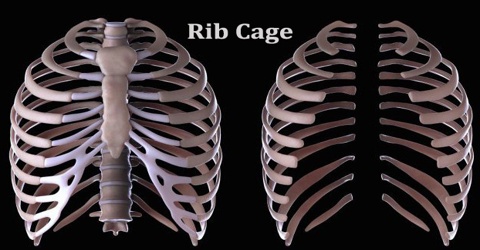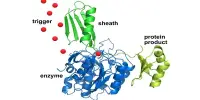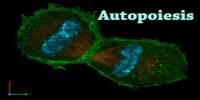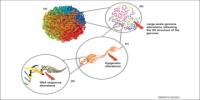Rib Cage
Definition
Rib cage is the bony structure in the chest formed by the ribs and sternum (breastbone) that encloses and protects the heart and lungs. In humans, the rib cage, also known as the thoracic cage, is a bony and cartilaginous structure which surrounds the thoracic cavity and supports the pectoral girdle (shoulder girdle), forming a core portion of the human skeleton.

The rib cage has the function of protecting the lungs, heart, esophagus, intestines, trachea, nerves and lymph. It also helps to keep them in their place. It is connected to the clavicle, scapula and the cervical spine in its upper part, and lumbar spine, in its lower part. Rib cage consists of 24 ribs (2 sets of 12), which are attached to a long, flat bone in the center of the chest called the sternum. The ribs are connected to the sternum with a strong, somewhat flexible material called cartilage.
Structure and Functions of Rib Cage
Rib cafs provides an anchor point for about fourty sets of muscle pairs to pull and contract. The typical ribs have a generalised structure, while the atypical ribs have variations on this structure.
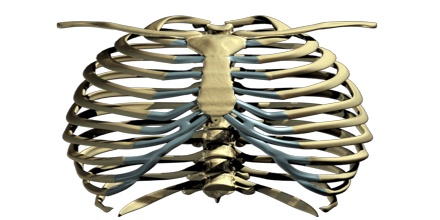
Typical Ribs –
The typical rib consists of a head, neck and body:
- The head is wedge shaped, and has two articular facets separated by a wedge of bone. One facet articulates with the numerically corresponding vertebrae, and the other articulates with the vertebrae above.
- The neck contains no bony prominences, but simply connects the head with the body. Where the neck meets the body there is a roughed tubercle, with a facet for articulation with the transverse process of the corresponding vertebrae.
- The body or shaft of the rib is flat and curved. The internal surface of the shaft has a groove for the neurovascular supply of the thorax, protecting the vessels and nerves from damage.
Atypical Ribs –
- Ribs 1, 2, 10 11 and 12 can be described as ‘atypical’ – they have features that are not common to all the ribs.
- Rib 1 is shorter and wider than the other ribs. It only has one facet on its head for articulation with its corresponding vertebrae. The superior surface is marked by two grooves, which make way for the subclavian vessels.
- Rib 2 is thinner and longer than rib 1, and has two articular facets on the head as normal. It has a roughened area on its upper surface, where the serratus anterior muscle attaches.
- Rib 10 only has one facet – for articulation with its numerically corresponding vertebrae.
- Ribs 11 and 12 have no neck, and only contain one facet, which is for articulation with their corresponding vertebrae.

The bones of the rib cage are the sternum, the 12 thoracic vertebrae and the 12 pairs of ribs. The sternum is a flat bone that is made up of three parts, the (1) manubrium, (2) body, and the (3) xiphoid process. The top edge of the manubrium has a depression called the suprasternal or jugular notch.
Rib cage helps push air out of the lungs as well. Muscles lining the rib cage help move the rib cage up upon inhalation, so the lungs can expand. During exhalation, the muscles and the lungs relax, allowing the weight of the rib cage to push out carbon dioxide air through the mouth and nose. Although the rib cage works to protect delicate organs, it is also fragile. People break or fracture their ribs on a regular basis.
Reference: webmd.com, teachmeanatomy.info, dictionary.com, wikipedia.
